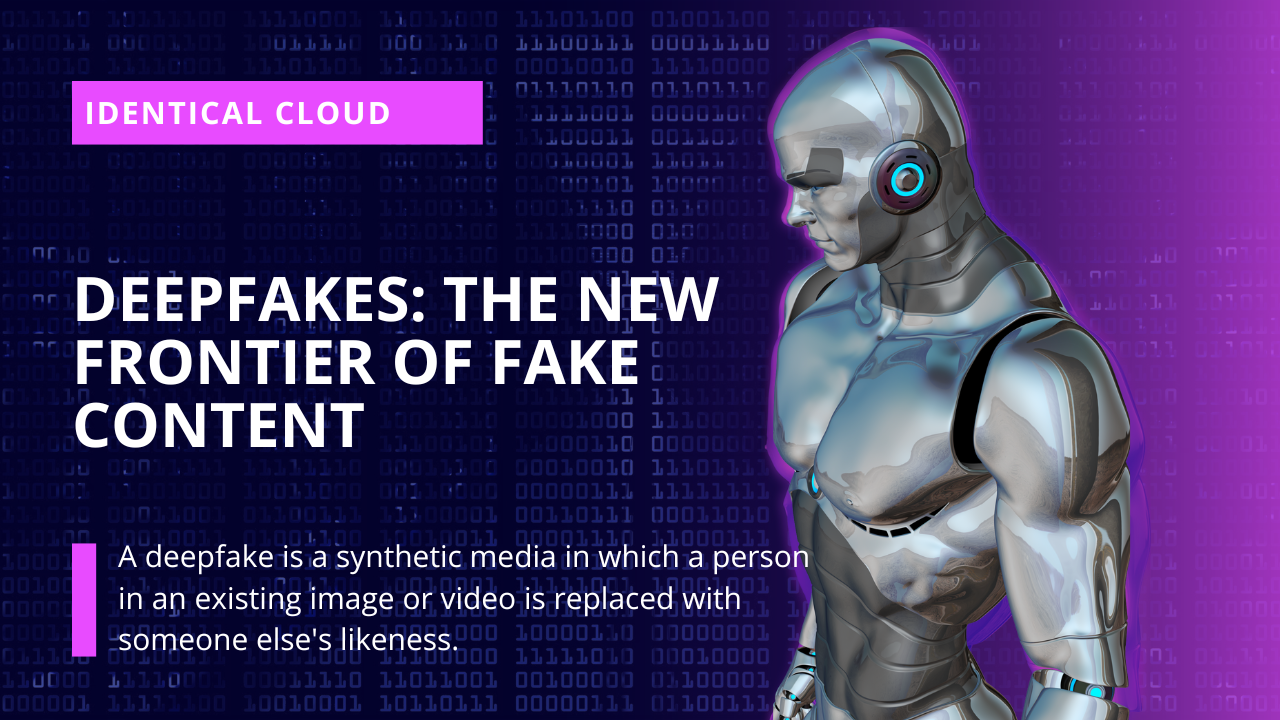
Deepfakes: The New Frontier of Fake Content
Deepfakes: The New Frontier of Fake Content
A deepfake is a synthetic media in which a person in an existing image or video is replaced with someone else’s likeness. The process uses artificial intelligence to create highly realistic and convincing forgeries. Deepfakes can be used to spread misinformation, damage someone’s reputation, or create fake evidence.
Introduction: Unraveling the Deepfake Phenomenon
What is a deepfake?
A deepfake refers to a manipulated or altered video, image, or audio created using artificial intelligence (AI) techniques, particularly deep learning algorithms. These algorithms analyze and synthesize existing media to create content that appears convincing and authentic.
How are deepfakes created?
Deepfakes are generated through a process known as Generative Adversarial Networks (GANs), where two neural networks, the generator and the discriminator, work in tandem. The generator creates the fake content, while the discriminator evaluates its realism. This iterative process results in increasingly convincing deepfake creations.
What are the dangers of deepfakes?
The rise of deepfakes introduces a host of risks, from the spread of misinformation to reputational damage and criminal activities. As deepfake technology advances, it becomes increasingly challenging to discern real content from fake, threatening the fabric of trust in our digital age.
The Rise of Deepfakes: A World of Possibilities and Perils
The emergence of deepfakes has been facilitated by the convergence of AI advancements and user-friendly software. This convergence has enabled individuals with varying levels of technical expertise to create deepfakes for a range of purposes.
Entertainment and Amusement:
Deepfakes have garnered attention for their use in entertainment, enabling actors to embody iconic characters or participate in scenes they never actually filmed.
Political Manipulation:
The political sphere has witnessed the potential for deepfakes to manipulate public opinion by showing political figures seemingly saying or doing things they never actually did.
Revenge Porn and Harmful Intent:
Deepfakes have been used maliciously, creating fake explicit content featuring unsuspecting individuals, leading to emotional distress and reputational damage.
The Dangers of Deepfakes: Unraveling the Threats
Deepfakes can be used for a variety of malicious purposes. They can be used to spread misinformation, damage someone’s reputation, or create fake evidence. For example, a deepfake could be used to make it look like a politician is saying something they never said, or to make it look like a celebrity is doing something they never did. This could have a significant impact on elections, public opinion, and even personal relationships.
Spreading Misinformation:
Deepfakes can easily be used to create convincing fake news, leading to the spread of false narratives and undermining trust in reliable sources.
Reputation Damage:
Individuals, public figures, and even corporations can fall victim to deepfake attacks that tarnish their reputation and credibility.
Fake Evidence and Crime:
Deepfakes can be employed to create fake evidence, potentially affecting legal proceedings and facilitating criminal activities.
How to Spot a Deepfake: A Quest for Authenticity
Visual Inconsistencies:
Carefully scrutinize the person’s appearance, especially around the eyes, hairline, and lighting conditions. If something seems off, it could be a sign of a deepfake.
Unnatural Movement and Artifacts:
Pay attention to movement patterns. Deepfakes may exhibit unnatural or glitchy movements, and there could be blurring or distortion around the person’s face.
Lip Movements and Audio:
Observe lip movements carefully. Deepfakes might not sync perfectly with the audio, leading to unnatural speech patterns.
Reverse Image Search:
Perform a reverse image search to check if the content has been used elsewhere or if it is associated with credible sources.
The Future of Deepfakes: Navigating the Unknown
Deepfake technology is still in its early stages, but it is rapidly evolving. As deepfake technology becomes more sophisticated, it will become more difficult to spot them. This could have a significant impact on society, as deepfakes could be used to manipulate public opinion or to commit crimes.
As deepfake technology continues to evolve, it poses both opportunities and challenges for society.
Enhanced Deception:
Advanced deepfakes will become harder to detect, potentially leading to an environment where misinformation and disinformation thrive.
Ethical Considerations:
Deepfakes raise profound ethical questions about consent, privacy, and the authenticity of visual and audio evidence.
Countermeasures and Awareness:
The fight against deepfakes requires a multi-pronged approach, involving technology, education, and regulation.
Deepfakes are a new and emerging technology with the potential to be used for both good and evil. It is important to be aware of the dangers of deepfakes and to be able to spot them. We need to develop new ways to combat deepfakes and to ensure that they are not used to harm others.
Deepfakes represent a fascinating and concerning frontier in the digital landscape. While they offer creative possibilities, they also threaten to erode trust and manipulate reality. As consumers of content, it is crucial to approach information with skepticism, educate ourselves about the intricacies of deepfakes, and remain vigilant against the spread of misinformation. By acknowledging the power and pitfalls of deepfakes, we can collectively strive to ensure that this innovative technology is harnessed responsibly and ethically.
I hope this blog post has been informative and helpful. If you have any questions or concerns about deepfakes, please feel free to leave a comment below.
